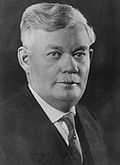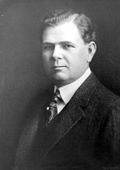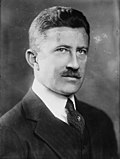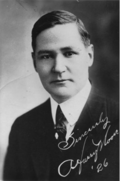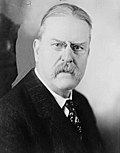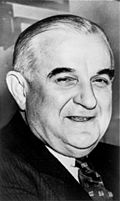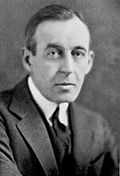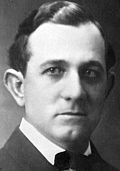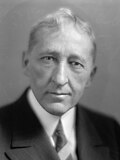November 6, 1934 [a] | ||||||||||||||||||||||||||||||||||||||||||||||||||||||||||||||
36 of the 96 seats in the United States Senate 49 seats needed for a majority | ||||||||||||||||||||||||||||||||||||||||||||||||||||||||||||||
|---|---|---|---|---|---|---|---|---|---|---|---|---|---|---|---|---|---|---|---|---|---|---|---|---|---|---|---|---|---|---|---|---|---|---|---|---|---|---|---|---|---|---|---|---|---|---|---|---|---|---|---|---|---|---|---|---|---|---|---|---|---|---|
| ||||||||||||||||||||||||||||||||||||||||||||||||||||||||||||||
 Results of the elections: Democratic gain Democratic hold Republican hold Progressive gain Farmer–Labor hold No election | ||||||||||||||||||||||||||||||||||||||||||||||||||||||||||||||
| ||||||||||||||||||||||||||||||||||||||||||||||||||||||||||||||
The 1934 United States Senate elections were held in the middle of Democratic President Franklin D. Roosevelt's first term. The 32 seats of Class 1 were contested in regular elections, and special elections were held to fill vacancies. During the Great Depression, voters strongly backed Roosevelt's New Deal and his allies in the Senate, with Democrats picking up a net of nine seats, giving them a supermajority (which required 64 seats, two-thirds of the total 96 seats in 1934). [1] Republicans later lost three more seats due to mid-term vacancies (one to Farmer-Labor and two to Democrats); however, a Democrat in Iowa died and the seat remained vacant until the next election. The Democrats entered the next election with a 70-22-2-1 majority.
Contents
- Gains, losses, and holds
- Retirements
- Defeats
- Party Switches
- Post-election changes
- Change in composition
- Before the elections
- Elections result
- Race summaries
- Elections during the 73rd Congress
- Elections leading to the 74th Congress
- Closest races
- Arizona
- California
- Connecticut
- Delaware
- Florida
- Indiana
- Maine
- Maryland
- Massachusetts
- Michigan
- Minnesota
- Mississippi
- Missouri
- Montana
- Montana (regular)
- Montana (special)
- Nebraska
- Nebraska (regular)
- Nebraska (special)
- Nevada
- New Jersey
- New Mexico
- New Mexico (regular)
- New Mexico (special)
- New York
- North Dakota
- Ohio
- Pennsylvania
- Rhode Island
- Tennessee
- Tennessee (regular)
- Tennessee (special)
- Texas
- Utah
- Vermont
- Vermont (regular)
- Vermont (special)
- Virginia
- Washington
- West Virginia
- Wisconsin
- Wyoming
- Wyoming (regular)
- Wyoming (special)
- See also
- Notes
- References
This marked the first time that an incumbent president's party gained seats in both houses of Congress in midterm election cycles, followed by 1998 and 2002. [2] This was also the second of three times since the ratification of the 17th Amendment that the opposition party failed to flip any Senate seats, alongside 1914 and 2022.
A number of historic figures were first elected to the Senate in 1934, including future President Truman, future Federal District Judge and Labor Secretary Schwellenbach, and future Supreme Court Justice Minton.












